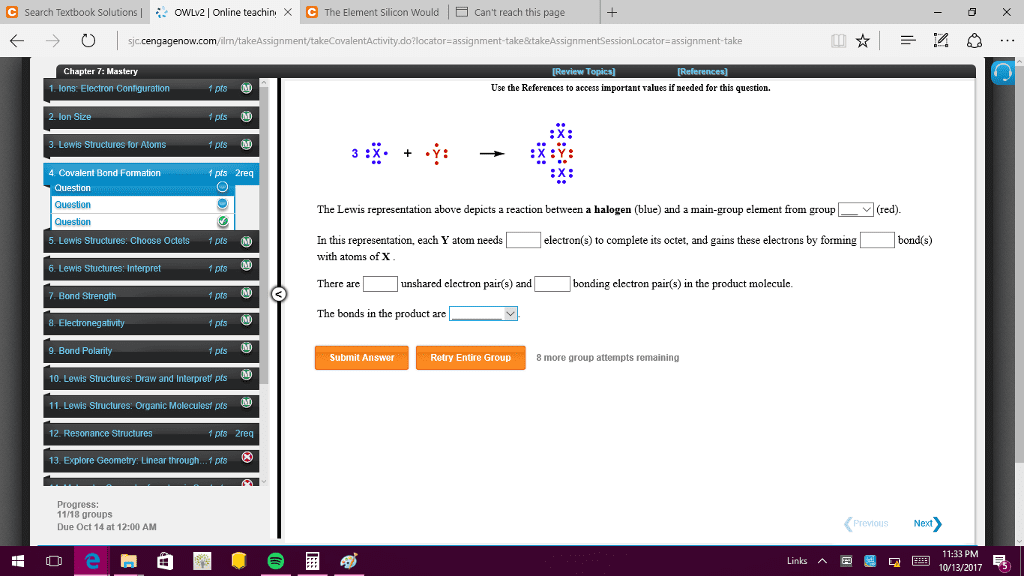CHEM 11200 Lecture Notes - Lecture 14: Bond Order, Bond Length, Electronegativity
Document Summary
It is possible for a string of atoms, especially for ones with double or triple bonds can have different bond placements. Resonance hybrid: scenario where two resonance structures have equal influence on a molecule. It is also possible for there to be non-equivalent resonance structures, creating major or minor structures. Bond dissociation energy: energy required to break bond homolytically. Homolytic bond cleavage: each electron in a bond goes to each molecule. Heterolytic cleavage: both electrons go to the same atom to create ions. Higher the bond order, the shorter and stronger the bond (smaller bond length and higher bde) Covalent bonds : formed between atoms where the electrons are shared. Polarity: based on electronegativity which is how much electron density will be unbalanced. Coordinate covalent bonds: one atom will donate both of the shared electrons in a bond.


